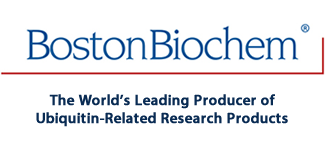
Recombinant Human Ubiquitin Mutant G76A Protein, CF Summary
Product Datasheets
Carrier Free
CF stands for Carrier Free (CF). We typically add Bovine Serum Albumin (BSA) as a carrier protein to our recombinant proteins.Adding a carrier protein enhances protein stability, increases shelf-life, and allows the recombinant protein to be stored at a more dilute concentration.The carrier free version does not contain BSA.
In general, we advise purchasing the recombinant protein with BSA for use in cell or tissue culture, or as an ELISA standard.In contrast, the carrier free protein is recommended for applications, in which the presence of BSA could interfere.
UM-G76A
| Formulation | Lyopholized powder. |
| Reconstitution | Reconstitute at 10 mg/mL in an aqueous solution. |
| Shipping | The product is shipped at ambient temperature. Upon receipt, store it immediately at the temperature recommended below. |
| Stability & Storage: | Use a manual defrost freezer and avoid repeated freeze-thaw cycles.
|
Reconstitution Calculator
Background: Ubiquitin
Ubiquitin is a 76 amino acid (aa) protein that is ubiquitously expressed in all eukaryotic organisms. Ubiquitin is highly conserved with 96% aa sequence identity shared between human and yeast Ubiquitin, and 100% aa sequence identity shared between human and mouse Ubiquitin (1). In mammals, four Ubiquitin genes encode for two Ubiquitin-ribosomal fusion proteins and two poly-Ubiquitin proteins. Cleavage of the Ubiquitin precursors by deubiquitinating enzymes gives rise to identical Ubiquitin monomers each with a predicted molecular weight of 8.6 kDa. Conjugation of Ubiquitin to target proteins involves the formation of an isopeptide bond between the C-terminal glycine residue of Ubiquitin and a lysine residue in the target protein. This process of conjugation, referred to as ubiquitination or ubiquitylation, is a multi-step process that requires three enzymes: a Ubiquitin-activating (E1) enzyme, a Ubiquitin-conjugating (E2) enzyme, and a Ubiquitin ligase (E3). Ubiquitination is classically recognized as a mechanism to target proteins for degradation and as a result, Ubiquitin was originally named ATP-dependent Proteolysis Factor 1 (APF-1) (2,3). In addition to protein degradation, ubiquitination has been shown to mediate a variety of biological processes such as signal transduction, endocytosis, and post-endocytic sorting (4-7).
Mature Ubiquitin has a highly conserved C-terminal diglycine motif which is crucial for activity and recognition with conjugation and deconjugation enzyme components. The replacement of the last glycine residue with alanine results in a Ub that supports Ubiquitin-activating (E1) enzyme-Ub thioester formation and downstream conjugation reactions (transfer to E2, E3) but at a rate ~20% compared to wild type Ubiquitin.This mutant however, inhibits deconjugation and prevents the removal of Ubiquitin from modified protein substrates by deubiquitinating enzyme (DUBs).Since this Ubiquitin becomes irreversibly conjugated to protein, it shifts the equilibrium between the bound and unbound form in the direction of conjugation, at the expense of the free form.
- Sharp, P.M. & W.-H. Li. (1987) Trends Ecol. Evol. 2:328.
- Ciechanover, A. et al. (1980 ) Proc. Natl. Acad. Sci. USA 77:1365.
- Hershko, A. et al. (1980) Proc. Natl. Acad. Sci. USA 77:1783.
- Greene, W. et al. (2012) PLoS Pathog. 8:e1002703.
- Tong, X. et al. (2012) J. Biol. Chem. 287:25280.
- Wei, W. et al. (2004) Nature 428:194.
- Wertz, I.E. et al. (2004) Nature 430:694.
FAQs
No product specific FAQs exist for this product, however you may
View all Proteins and Enzyme FAQsReconstitution Buffers
Reconstitution Buffer 1 (PBS)
Reviews for Recombinant Human Ubiquitin Mutant G76A Protein, CF
There are currently no reviews for this product. Be the first toreview Recombinant Human Ubiquitin Mutant G76A Protein, CF and earn rewards!
Have you used Recombinant Human Ubiquitin Mutant G76A Protein, CF?
Submit a review and receive an Amazon gift card.
$25/€18/£15/$25CAN/¥75 Yuan/¥1250 Yen for a review with an image
$10/€7/£6/$10 CAD/¥70 Yuan/¥1110 Yen for a review without an image
ebiomall.com






>
>
>
>
>
>
>
>
>
>
>
大多数药物在体内都是和特异性受体相互作用,改变细胞的生理生化功能而产生效应。目前已经确定的受体有30多种,根据受体存在的标准,受体可大致分为三类:
1.细胞膜受体:位于靶细胞膜上,如胆碱受体、肾上腺素受体、多巴胺受体、阿片受体等。
2.胞浆受体:位于靶细胞的胞浆内,如肾上腺皮质激素受体、性激素受体。
3.胞核受体:位于靶细胞的细胞核内,如甲状腺素受体。
另外也可根据受体的蛋白结构、信息转导过程、效应性质、受体位置等特点将受体分为四类:
1.含离子通道的受体(离子带受体):如N-型乙酰胆碱受体含钠离子通道。
2.G蛋白偶联受体:M-乙酰胆碱受体、肾上腺素受体等。
3.具有酪氨酸激酶活性的受体:如胰岛素受体。
4.调节基因表达的受体(核受体):如甾体激素受体、甲状腺激素受体等。
有些受体具有亚型,各种受体都有特定的分布部位核特定的功能,有些细胞也有多种受体。
请教各位大神,我最近在做WB,565KD的蛋白,动物组织的样品,听说样品制备需要蔗糖裂解液,请问这个是必须的嘛?用一般蛋白提取方法制备可以吗?还有电泳和转膜条件能否分享一下。不胜感激









